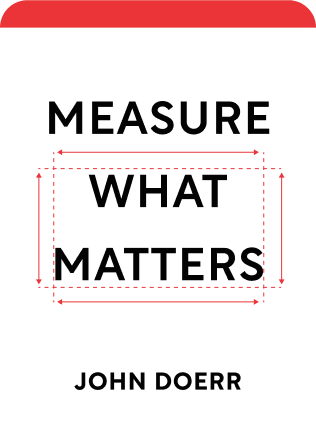

This article is an excerpt from the Shortform summary of "Measure What Matters" by John Doerr. Shortform has the world's best summaries of books you should be reading.
Like this article? Sign up for a free trial here .
How do you identify objectives in your OKR process? Why should you identify objectives before you start planning your OKRs?
Step 1 of the OKR process is to identify objectives. Identifying objectives is the first thing you should do in your OKR process, since it will help you establish your priorities and decide what your company needs.
Learn more about how to identify objectives below.
How to Identify Objectives
The first step of the OKR process is figuring out the “Os,” your objectives. Every individual and team in the company will have their own objectives and key results, but in order for these OKRs to be meaningful, they need to align with the organization’s highest objectives, so start with these.
To determine your organization’s highest objectives, ask, “What are the most important tasks we need to accomplish in the next three months, the next six months, and the next year?”
You can’t do everything. Answering these questions gets you focused on the few things that have to get done for the company to succeed. These are your objectives.
Your biggest priorities, the goals that everyone in the organization is working toward, are your organization-level objectives, or company-wide objectives.
Once you’ve identified your organization-level objectives, departments, teams, and individuals can identify their own objectives. These objectives often feed into and support organization-level objectives, so determining them is a matter of starting with the top objectives and figuring out what sub-goals you need to meet to achieve them. (We’ll cover how to create this alignment in the next chapter.)
At each tier, focus on three to five objectives. Any more than this, and your focus will be too dispersed.
Quantity and Quality OKRs
When you identify objectives, pair “quantity OKRs” (make ten sales calls) with “quality OKRs” (earn two new orders). This ensures that you don’t sacrifice the quality of your product or service in the name of meeting your ambitious quantitative goals.
| Quantity Objective | Quality Objective | Result |
| Process 10x more vouchers this quarter | Make 10% fewer errors in voucher processing | Processing is more efficient |
| Custodial staff cleans 3,000 square feet per hour | Custodial staff receives an average quality score of 8 or higher. | Office buildings are cleaner and cleaning takes less time |
| Developers create three new product features by Aug. 14th | Testing finds fewer than five bugs per feature | Code for features is cleaner |
Checklist: Focus and Commit
Once you’ve focused your priorities, and are beginning to identify objectives, you need to commit to the OKR process. Use this checklist to set up the OKR system and get your entire staff to commit to it.
Start with the Executive Team and Upper Management
Use the company’s mission statement and strategic plan to create top-line OKRs. There are three reasons to start at the top, and to start small:
- Executives and managers need to know their own OKRs before their direct reports can align their individual goals with those of the company. Often, organization-level key results will trickle down the hierarchy, becoming the objectives of departments, who will then create their own key results to meet those objectives.
- In the beginning, implementing OKRs won’t be a smooth process. Work out the biggest kinks before you continue the rollout to other tiers. It may take several phases before you implement OKRs company-wide.
- You need to establish buy-in. Employees won’t commit to the process if their bosses don’t publicly model and commit to it. Establish your own commitment first before asking for anyone else’s. To this end, create your own personal OKRs, independent of your team’s OKRs.
Decide on the Length of Your OKR Cycle
Along with learning how to identify objectives, you’ll need to choose the length of your OKR cycle. While individual objectives may have their own deadlines, your team should be operating according to the same general goal-setting schedule, or OKR cycle. For most companies, there are two OKR cycles, quarterly and annual, running simultaneously. Annual cycles are for long-term OKRs, and quarterly cycles are for short-term OKRs that support the longer-term objectives.
A quarterly OKR cycle is appropriate for businesses in markets that change quickly, such as technology. The short time frame of three months per quarter helps create a sense of urgency and deter procrastination. But the timeframe of your OKR cycle will depend on your particular business and field. Your OKR cycle might be monthly or semi-annually.

———End of Preview———
Like what you just read? Read the rest of the world's best summary of John Doerr's "Measure What Matters" at Shortform .
Here's what you'll find in our full Measure What Matters summary :
- How Google uses OKRs to rally 100,000 employees in the right direction
- How to avoid setting useless OKRs, and how to set great ones
- Key subtle behaviors your team must master to make OKRs work






